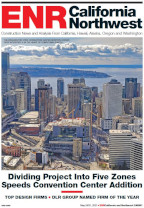The California Dept. of Water Resources has revised again the state's proposed plan to convey water from the northern part of the state to the southern part. The proposed changes, released on Aug. 15, would shrink by 50% the total permanent footprint of the project and shift more than 400 acres of permanent and temporary construction impacts from private to public lands.
The $25-billion draft Bay Delta Conservation Plan (BDCP) for California's Sacramento-San Joaquin Delta has gone through a number of changes over the past decade. The project's goal is to reduce reliance on the southern Delta's large pumps, which environmental advocates say are harmful to wildlife, particularly Chinook salmon and Delta smelt. The latest proposal is one of a group of alternatives that must go through a public comment period. Though it is unclear which proposal will be selected by state and federal officials, the current BDCP proposal is the preferred plan, says Nancy Vogel, a spokeswoman for the California Dept. of Public Resources.
The latest changes are in response to Delta residents' concerns. Specifically, the capacity of the proposed northern Delta intakes has been downsized to a maximum of 9,000 cu ft per second from 15,000 cfs. The number of intakes along the Sacramento River has dropped to three from five. Further, the proposal has been modified to move water using gravity, rather than pumping, from the intermediate forebay to the main forebay. Using gravity rather than pumps will reduce energy consumption and greenhouse-gas emissions, Vogel says.
The American Council of Engineering Companies of California is pleased with the changes. "We think it's moving in the right direction in terms of getting a project the state can get behind," says Paul Meyer, executive director.
But Gary Bobker, program manager for the San Francisco-based Bay Institute, says that although the revisions "are a step in the right direction," the state can do more in the area of conservation, water recycling and reclamation.


